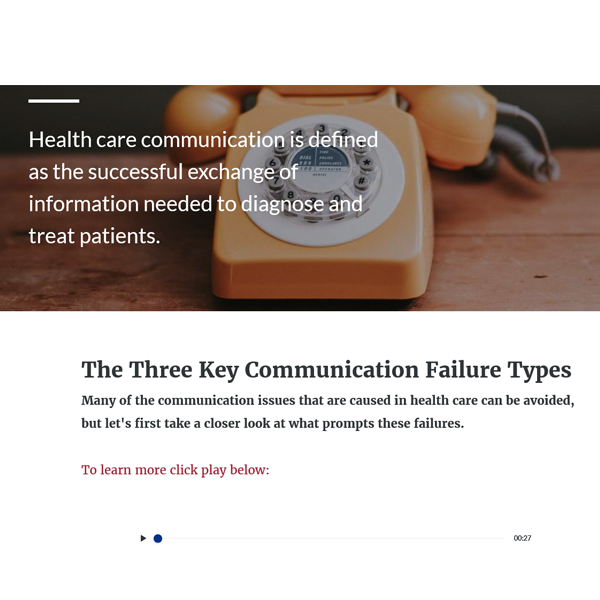Can We Talk? Communication Gaps Cause Patient Harm
Member: $49.00
CE Credit: 1
Domain: Clinical Patient Safety
Level: Practitioner
In this course, you will learn more about the significance and impact communication issues have in health care, as well as strategies to prevent and remedy those problems before they become malpractice cases.
Information is the currency of safe care, and communication is the vehicle by which that currency is transferred. Safe care hinges on the successful gathering and transfer of information among providers, and between providers and their patients and families. Incorrect or absent information at crucial points in the diagnostic or treatment process can result in serious patient harm.
While most organizations recognize the impact of communication issues, do you know what services are most vulnerable or where in the process of care the failures most often occur? Using real case studies and scenarios, this course sheds light on the who, what, when, and where of miscommunication (human and electronic) and shares tangible solutions being implemented in organizations actively tackling this complex problem.
Objectives:
- • Summarize the breadth and impact of communication issues in malpractice cases.
- • Compare specific examples of how communication failures lead to patient harm in different health care services.
- • Apply specific strategies for addressing common communication issues in each health care service.
Presenters:
Dana Siegal, RN, CPHRM
Gretchen Ruoff, MPH, CPHRM
Questions? Contact ASHRM@aha.org



